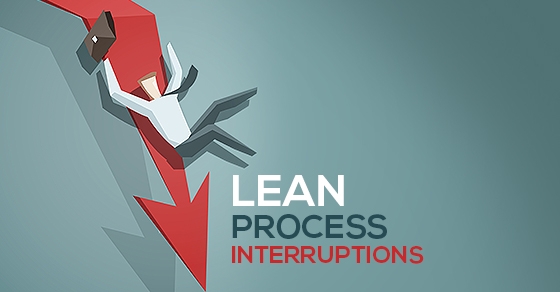Lean processes need a lot of planning in order to work correctly. Without the proper attention, wasted resources can quickly drive a business into the red. Here are the biggest culprits and how to avoid them:

1. Overproduction of Materials or Finished Products
This is the critical problem in lean production, and helps cause many other types of waste. Overproduction costs time, materials, and space. Producing things faster than the process intended can also lead to product defects and accidents.
Although it can feel great when a shift beats its target, managers should be responsible enough to produce what the process needs, when the process needs it. Anything more is an invitation to waste.
2. High Inventory
This is often a direct result of overproduction, but can also be caused by over-ordering raw materials. Inventory costs money. It needs to be warehoused and catalogued. In large production operations, the inventory budget can run millions.
Even worse, companies have a tendency to forget about excess inventory over time. Efficiency audits tend to find that about 20% of manufacturers’ held inventory is useless by the time it’s actually taken off the shelf. That’s a lot of money going straight into the trash.
Avoid producing more than you can sell or more than you can finish. Most importantly, avoid ordering materials if you do not know when those materials will be necessary. Resist the temptation of deals. Even at a good price, a thoughtless bulk purchase will still cost you a ton.
3. Defects
Defects cause waste throughout a product’s entire lifespan. A defective product may need to be sent back to the line and reworked, wasting resources. Even worse, the product may make it out the door, causing problems for your brand image, or even forcing recalls. Hire engineers to revise your process to reduce the chances of defects. Even if this slows down a step in the process, it won’t slow it down as much as the rework and recall process.
4. Transportation
Transportation waste is hard to measure, but it is there. Many alternative layouts to factories can help reduce this waste. Contact a logistics consultant to discover and reduce transportation waste.
5. Unnecessary Movement
Every repetitive movement carries a risk of workplace injuries. Particularly dangerous are lifts and twists. Take every effort to get tools and materials to employees without them needing to bend over or turn around.
6. Underused Equipment
A “monument” is a piece of equipment that does not add enough value to justify its cost. The best way to spot monuments is to run new capital purchases by the actual workers in the process. They will have the clearest perspective on how much a piece of equipment will be actually be used.

